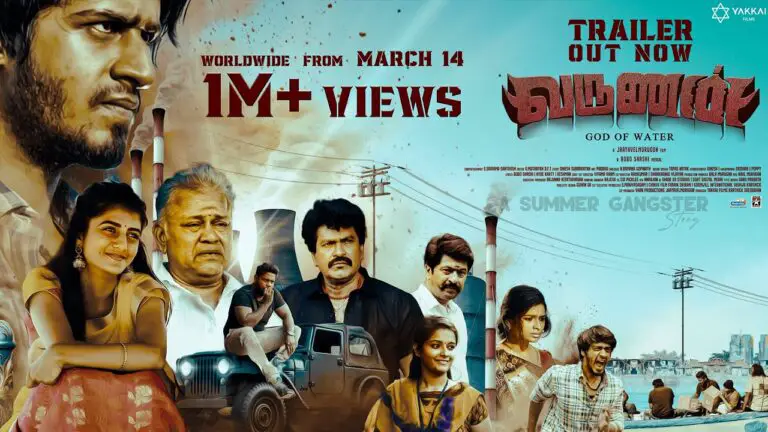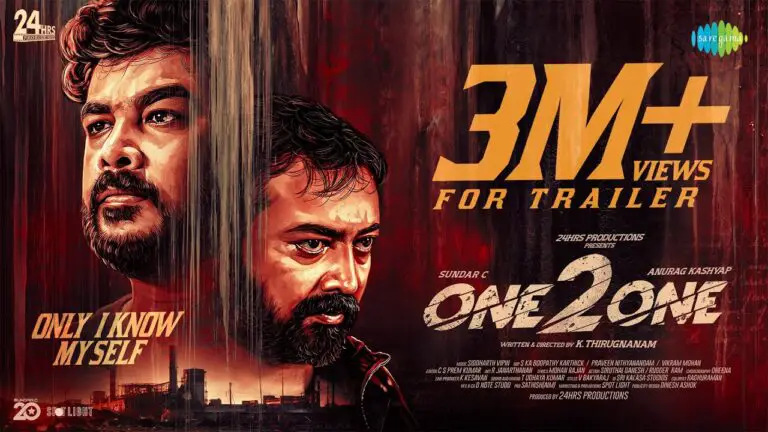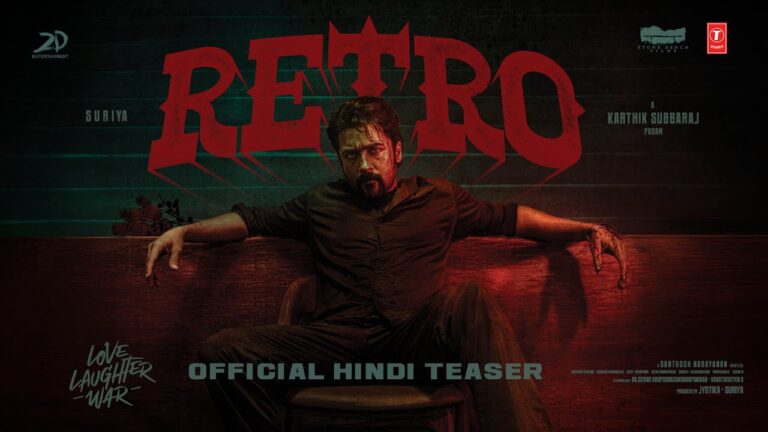Jenma Natchathiram Movie 2025 Bapamtv Review Details
Jenma Natchathiram (2025) Review – How Director B. Manivarman Crafts Atmospheric Horror
Introduction
Director B. Manivarman returns with Jenma Natchathiram (2025), a Tamil horror-thriller that honors the legacy of the 1991 cult classic while breathing new life into the genre. Known for his meticulous storytelling and restrained style, Manivarman creates a slow-burning horror film that feels intimate, unsettling, and morally grounded.
With a focus on atmosphere over spectacle, and character over shock, this film marks a stylistic evolution in Tamil horror.
Director’s Vision and Signature
B. Manivarman’s direction leans into old-school storytelling—carefully paced, richly symbolic, and minimally indulgent.
He eschews excessive VFX and loud horror tropes, opting instead for a tone that evokes dread through realism.
The haunted mill near Pondicherry serves as a perfect setting for his vision—claustrophobic, rotting with secrets, and steeped in history.
His directorial restraint makes even the smallest gestures—like a door creaking or a ritual whispered—echo with meaning.
Visual Storytelling and Blocking
Manivarman utilizes blocking to heighten suspense—characters are often dwarfed by their surroundings, suggesting vulnerability.
Scenes are composed with a painter’s precision; light and shadow interplay to signify mood shifts.
Each room in the mill is shot with a different tone: the prayer room feels suffocatingly holy, while the inner vault feels like a descent into hell.
The mise-en-scène is rich with detail, echoing themes of greed, rebirth, and penance.
Working With the Cast
Manivarman draws tightly controlled performances from his actors.
Malvi Malhotra’s journey from skeptical treasure-seeker to terrified survivor is nuanced, subtle, and emotionally grounded.
Taman Akshan and supporting cast members like Kali Venkat and Munishkanth display naturalistic acting styles,
a result of Manivarman’s decision to use rehearsed improvisation in key scenes.
Use of Silence and Sound
One of Manivarman’s boldest choices is his use of silence. Entire scenes pass with minimal dialogue or music.
This quiet amplifies tension and forces the viewer to focus on visual cues, like body language or set detail.
When sound is used—such as Sanjay Manickam’s ambient score or the chilling creak of a broken swing—it’s deliberately placed.
Each auditory element becomes a narrative device in itself.
Symbolism and Thematic Layers
Manivarman weaves subtle symbolism throughout the film:
- The mill symbolizes karma and rebirth, a place where past sins resurface.
- The buried gold becomes a metaphor for generational greed and spiritual decay.
- Repetition of patterns (like recurring dreams or footsteps) reinforces the concept of predestined fate.
These themes echo the director’s belief in moral consequence—something present in all his works.
Table: Director B. Manivarman’s Key Directorial Techniques
| Technique | Execution in Film |
|---|---|
| Atmospheric World-Building | Uses the haunted mill as a living, breathing character |
| Minimalism | Limited dialogues, grounded performances, realistic soundscape |
| Symbolism | Gold, rituals, and reincarnation motifs woven into the narrative |
| Actor Direction | Fosters natural, emotionally restrained performances |
| Lighting and Shadows | Employs chiaroscuro lighting for emotional and thematic depth |
Comparison with His Earlier Works
While Manivarman is best known for his realist drama roots in television and short films,
Jenma Natchathiram represents his most ambitious feature-length experiment yet.
It retains his signature emotional restraint and thematic weight,
but moves into genre territory with confidence and visual innovation.
Audience and Critical Reception of Direction
Critics have lauded the film’s directorial subtlety and its departure from mainstream horror clichés.
Audiences have responded positively to the fresh approach, though some viewers accustomed to jump scares may find the pacing deliberate.
Nonetheless, many are hailing Manivarman’s vision as a “refreshing antidote” to formulaic horror in Kollywood.
Table: Directional Strengths vs Weaknesses
| Strengths | Weaknesses |
|---|---|
| Strong thematic vision | Slow pacing may not appeal to all |
| Immersive set design | Minimalist style may alienate some viewers |
| Effective actor control | Lack of commercial elements like songs |
| Artful symbolism | Abstract elements may require multiple viewings |
FAQs
Question 1
What makes B. Manivarman’s direction in Jenma Natchathiram unique?
Answer 1
His use of minimalism, symbolism, and ambient horror creates a slow-burning, cerebral viewing experience.
Question 2
Does the director rely on typical horror tropes?
Answer 2
No. Manivarman avoids jump scares and overused supernatural elements, focusing on psychological fear and moral complexity.
Question 3
Is this a commercial horror film?
Answer 3
Not in the traditional sense. It leans more toward artistic horror, prioritizing story and atmosphere over mass appeal.
Conclusion
B. Manivarman’s directorial vision in Jenma Natchathiram is bold, deliberate, and distinct.
He prioritizes tone, emotion, and internal tension over formulaic fear, creating a film that lingers long after the credits.
This isn’t just a horror movie—it’s a meditation on karma, greed, and survival, presented through a lens of haunting realism.
For viewers willing to step into a slower, richer cinematic experience, Jenma Natchathiram is one of the most rewarding Tamil films of 2025.
Review collaboration by iBomma Movies, Bappamtv Movies, and Iradha Movies







